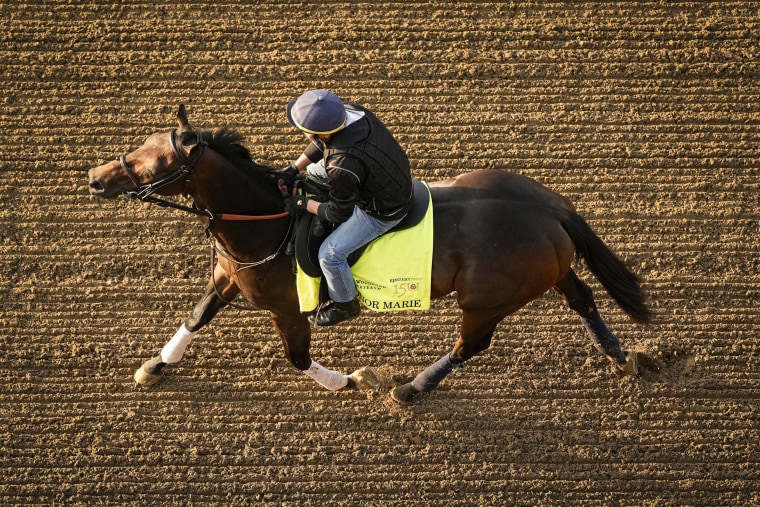Horses honed skills such as running, jumping and pulling as humans bred and trained them for various purposes over millennia. And the 151st Derby — horse racing’s most-watched event — will draw attention not only to the animals’ skills, but also to concerns about their treatment and health. Advocates have long raised concerns about deaths and injuries — calls that were amplified two years ago, when 12 horses died at Churchill Downs.
There’s no doubt that war, agriculture and societies have been transformed by the human-horse relationship.
“Horses allowed us to circumvent our own biological limitations as a species,” said Timothy Winegard, a historian at Colorado Mesa University and author of a recent book, “The Horse.” “We combined our brains with the horses’ size, strength, stamina and speed to form the most unstoppable animal coalition.”
What makes horses so powerful?
A horse’s heart and lungs are the source of its extraordinary power.
The heart averages 10 to 12 pounds (4.5-5.4 kg), or about 1% of the animal’s body weight, compared with half a percent for the typical human heart. Secretariat, the storied horse that won the Triple Crown in 1973, was found after his death to have a heart weighing more than 20 pounds (9.1 kg).
Horse hearts are built for exertion. The average horse can go from a resting heart rate of about 34 beats per minute to 220 or 240 while racing — faster than a human heart during maximum exertion.

“One thing that’s really unique about horses is that they have an incredible capacity to move blood around their bodies — their heart rate can go really high and still be safe,” said University of Connecticut researcher Sarah Reed, editor in chief of the journal Animal Frontiers.
They also have a lung capacity of 60 liters — 10 times that of humans.
“That massive lung field allows for oxygen to transfer from the air into their blood, which is vitally important for sustaining aerobic energy,” Farmer said.
Recent research in the journal Science found that a genetic mutation enables horses to avoid negative side effects of super high energy production.
“Horses are great athletes because they can deliver a lot of oxygen to their muscles — way more than an elite human can —and by elite human, I mean Olympic athlete,” said Gianni Castiglione, the study’s co-author. “They have a bigger tank of gas and they have a more efficient engine … and this mutation is contributing to both of those things.”
What is behind horses’ speed and other skills?
Other aspects of a horse’s biology enhance its abilities.
Horses store extra red blood cells in their spleens. These cells are released to carry even more oxygen around the body during intense exertion.
“Adrenaline when exercising causes the spleen to release extra red blood cells into circulation,” veterinarian Hilary Clayton said. “What horses are doing is essentially ‘blood doping’ themselves.”

Meanwhile, horses’ brains allow them to process sensory information and react quickly. That’s despite having frontal lobes, parts of the brain used for thought and planning that are proportionally smaller than those in humans.
“Brainwise, they’re designed with a real desire to play and run independent of any fear,” said Dr. Scott Bailey, a veterinarian at Claiborne Farm in Paris, Kentucky, a thoroughbred breeding farm where Secretariat is buried. Horses are also able to focus intently, which “is really important for an athlete.”
Bone structure and musculature also help. The ligaments and tendons in their hind legs act like springs, Farmer said, helping propel them forward. Like other large prey animals, he added, they have “long, thin legs that are meant to run.”
What about the risks for horses?
The adaptations that make horses faster also predispose them to injury, Reed said. Their skinny legs absorb the impact of each stride, she said, and over time the repetitive stress of racing and training can lead to deformation of tendons and ligaments.
In 2023, deaths occurred not only at Churchill Downs, but other major racing venues, affecting public perceptions of the sport and sparking changes. Reviews found no single cause for the deaths. But for 2024, Churchill Downs upgraded equipment used on its dirt surface and added an equine safety and integrity veterinarian.

Leave a Reply